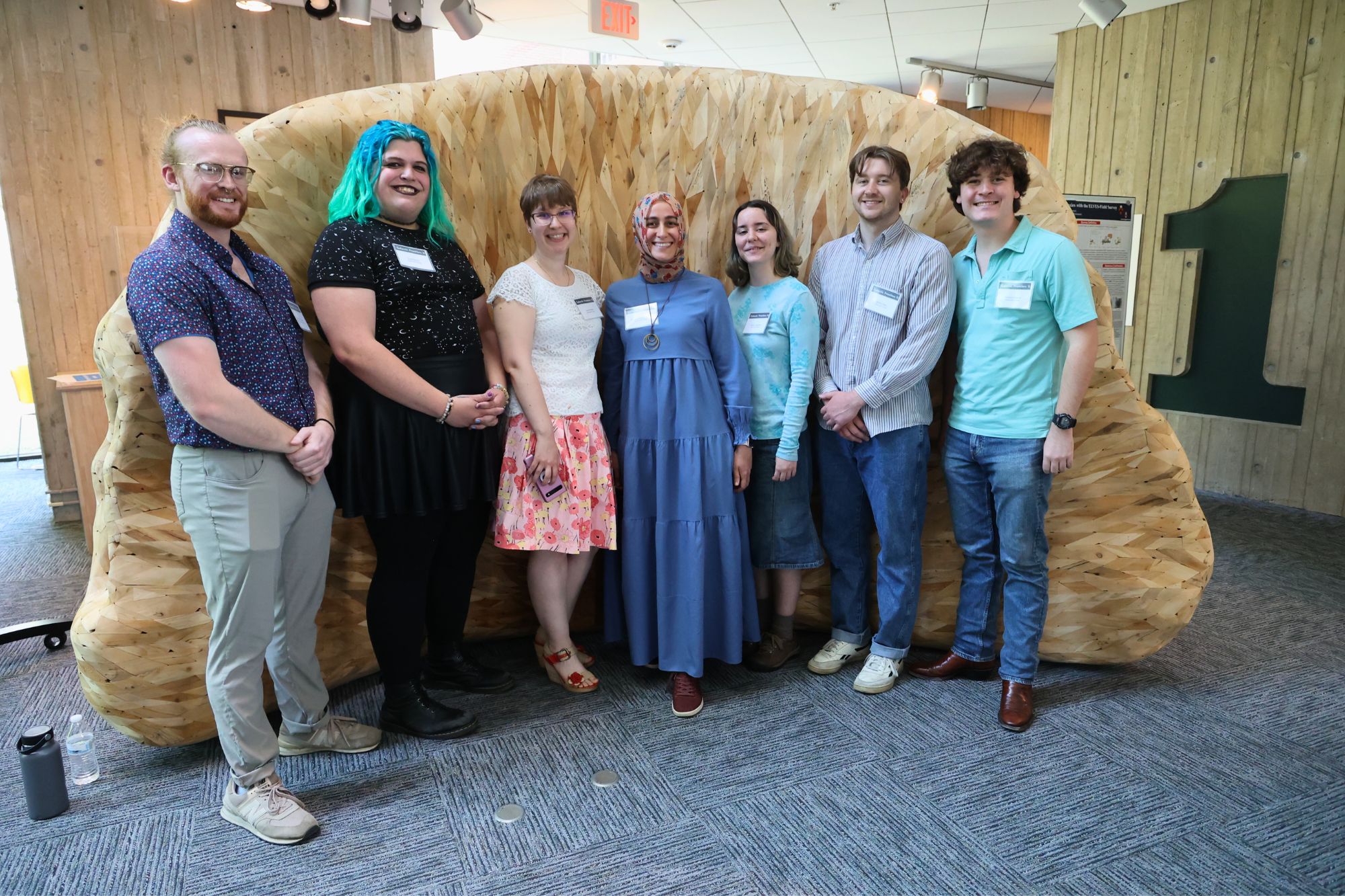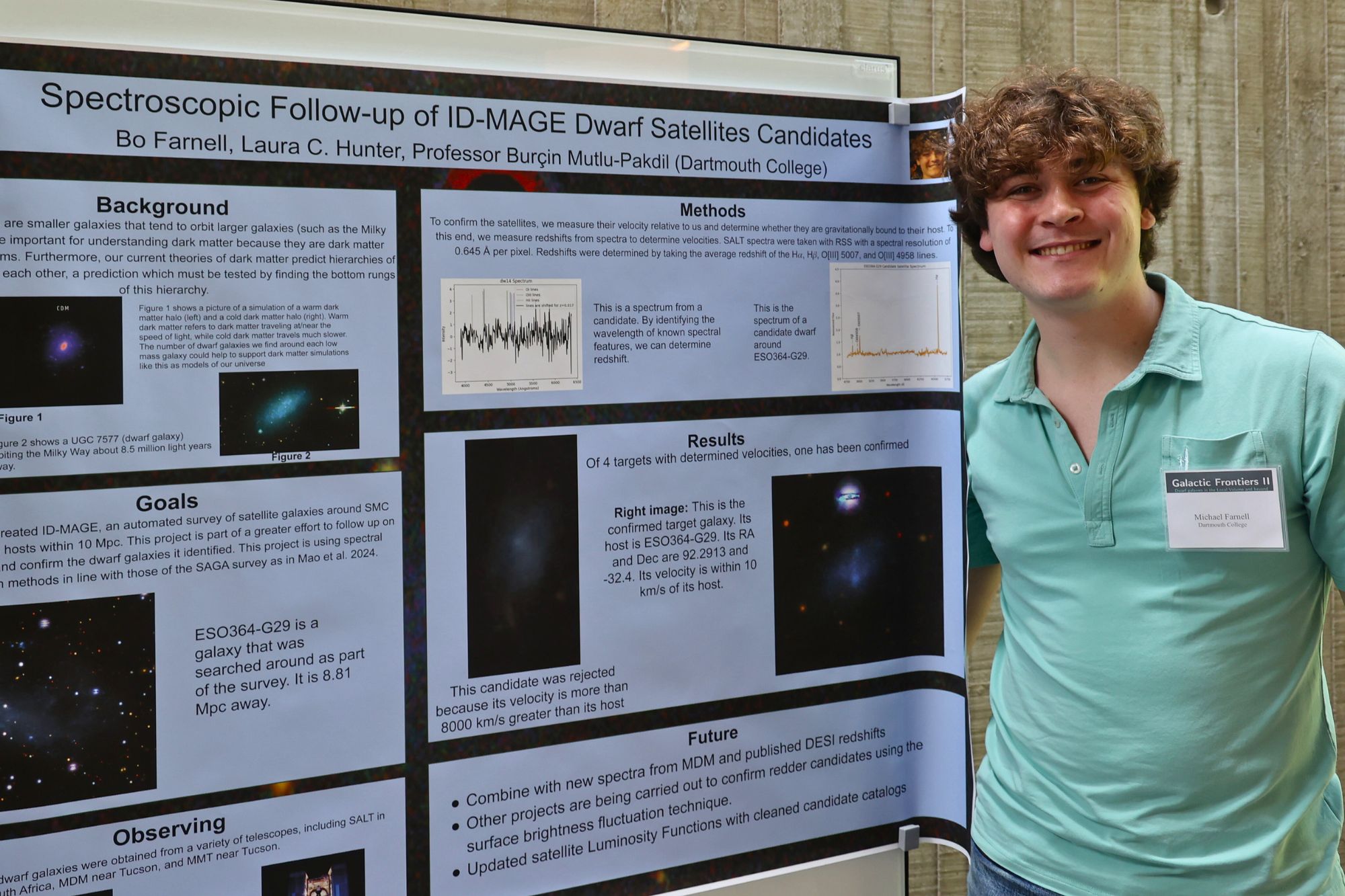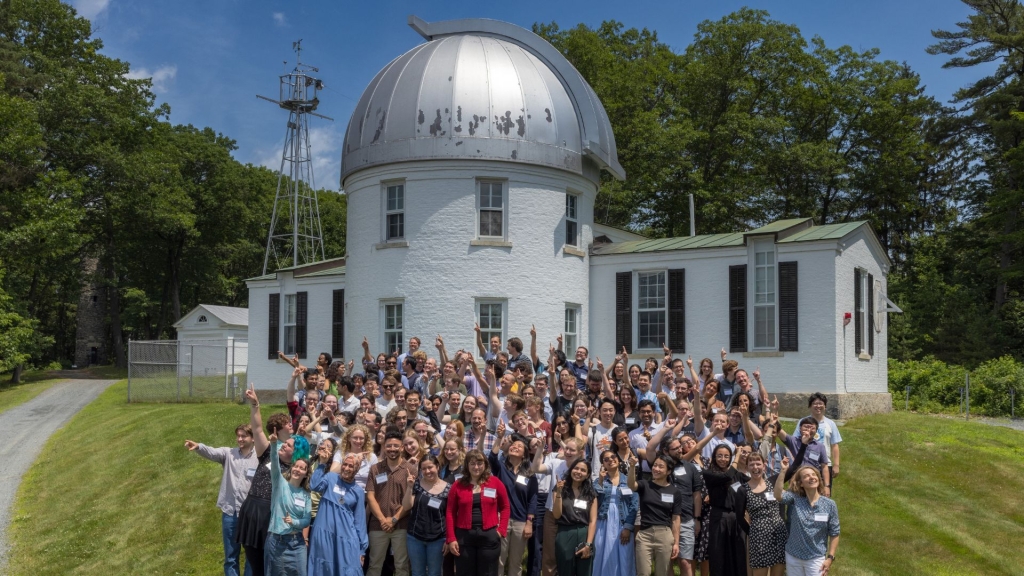Scientists from around the world convened at Dartmouth last week for a major conference on dwarf galaxies—small galaxies that often orbit larger ones like the Milky Way. These faint collections of stars play a major role in helping astronomers understand how galaxies evolve.
Galactic Frontiers II: Dwarf Galaxies in the Local Volume and Beyond was the largest astronomy meeting on campus in recent memory. The three-day event featured interactive talks and poster sessions, as well as a livestreamed broadcast of the first images from the Vera C. Rubin Observatory.
Burçin Mutlu-Pakdil, assistant professor of physics and astronomy, played a lead role in planning the conference as a member of its scientific organizing committee.
“This conference grew out of a shared desire to bring together the international community working on dwarf galaxies, stellar streams, and star clusters—key tracers of galaxy formation in the low-mass regime,” she says.
Dwarf galaxies are the most common type in the universe and are often found orbiting larger galaxies, though some exist in isolation.
Building on the success of the first iteration of the conference at the Flatiron Institute in 2023, Galactic Frontiers II expanded its scope and welcomed scientists from around the world.

Left to right: Incoming graduate student Benjamin Velguth, graduate student Kai Herron, postdoctoral research associate Laura Hunter, professor Burçin Mutlu-Pakdil, graduate student Sasha Campana, graduate student Quinn Casey, and Michael (“Bo”) Farnell ’26. (Photo by Herb Swanson)
Mutlu-Pakdil hopes that participants left with “fresh perspectives, new collaborations, and a better understanding of how different observational and theoretical approaches can be used and combined to tackle some of the most exciting questions in near-field cosmology.”
“I walked away from the conference with new ideas!” says Kai Herron, a Guarini graduate student in the Department of Physics and Astronomy. “I met so many new scientists from around the world and reconnected with friends from previous conferences. Our discussions fueled my scientific curiosity.”
Along with fellow graduate student Sasha Campana, Herron moderated the discussion in Steele Hall of the first images from the Rubin Observatory and its 3,200-megapixel camera, the largest digital camera ever built.
Images of nebulae, galaxies, and asteroids at an unprecedented scale filled the screen, previewing the extraordinary level of detail that will result from the observatory’s upcoming Legacy Survey of Space and Time (LSST), a 10-year scientific mission to explore and understand some of the universe’s biggest mysteries.
(Mutlu-Pakdil and Assistant Professor of Physics and Astronomy Elisabeth Newton recently received Scialog Collaborative Innovation Awards from the Research Corporation for Science Advancement to advance research made possible by the ambitious survey.)
“I was so excited to gather with so many brilliant astrophysicists to see the first images from Rubin unveiled,” says Herron, a data science fellow for LSST who plans to use data from the survey to study low-surface brightness galaxies. While moderating the session, Herron says, she and Campana were “pointing out all the galaxies in the image we would want to study for our future research projects.”
Mutlu-Pakdil took particular pride in hosting the conference at Dartmouth and connecting the local community—including students—”with a broader international network of experts.”
“This meeting has brought to Hanover many of the most prominent scientists in the world studying the smallest of galaxies as well as many early-career researchers who are doing exciting and active research in the field,” says Ryan Hickox, professor and chair of the Department of Physics and Astronomy. “Since arriving at Dartmouth, professor Burçin Mutlu-Pakdil has built a group that is making discoveries at the cutting-edge of this field, and the success of this meeting is testament to the leadership of her team and our department in astrophysical research.”

Michael (“Bo”) Farnell ’26 with his research poster (Photo by Herb Swanson)
The interactive conference was designed to allow early-career researchers ample opportunity to share their work.
“One of the most rewarding aspects has been the enthusiastic engagement from early-career researchers and the vibrant discussions sparked by the flash talks and poster sessions,” says Mutlu-Pakdil.
Along with Herron and Campana, Dartmouth graduate student Quinn Casey and Michael (“Bo”) Farnell ’26 participated in the flash talks and poster sessions on their research. Postdoctoral research associate Laura Hunter also led a talk and moderated a discussion.
“It was exciting to be one of the only people there without a bachelor's degree, and to get to meet and hear from all these people whose papers and research I've been following,” says Farnell, a triple major in astronomy, physics, and music. “The experience got me very excited to apply to graduate schools this fall.”
